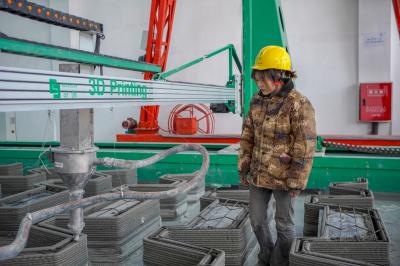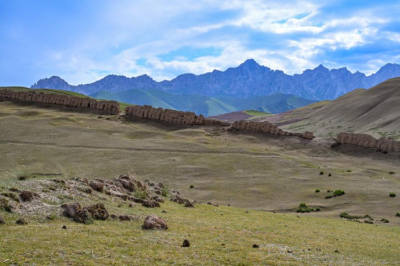| Mar. 29, 2018 -- The China Society for Human Rights Studies held a conference themed on "The Protection and Development of Tibetan Culture" on Mar.7 during the 37th meeting of United Nations Human Rights Council, introducing the efforts and fruits that Tibet has achieved in protecting and developing Tibetan traditional culture. More than 60 delegates from governments, international organizations, the NGOs, experts and journalists attended the conference. It is the first time that a Chinese NGO holds a conference themed on Tibet at the Palais des Nations, Geneva. Four native Tibetan scholars and Bressler, a French writer who have published books on Tibet, gave speeches and interpreted the topics that have attracted great attention, with the aim to let the world better understand Tibetan culture and the development of Tibet. As from March 27, we will keep updating the speeches of the delegates. The protection and development of Tibetan culture (abstract)
Ladies and gentlemen: I'm the secretary-general of China Tibetology Research Center. I was born at Gyangz County of Tibet Autonomous Region, a native Tibetan. Since the Tibet Autonomous Region was founded over 50 years ago, the central government and the region have been making great efforts to respect, protect, inherit and promote Tibetan traditional culture and have made remarkable achievements. Today, with the blend of tradition and modern elements, Tibetan culture is displaying a new vitality. I What is Tibetan culture? In the time-honored historical development process, Tibetan people created glorious Tibetan culture by taking in other civilizations. Tibetan culture includes Tibetan language, its religious belief, intangible cultural heritage and cultural relics, etc. The inception and development of Tibetan culture enrich Chinese culture and the forming process of Tibetan culture also gives expression to the historical process of pattern of diversity in the unity of the Chinese nation. Chinese civilization itself is a unity with high degree of cohesive force formed through constant accumulation and integration during the historical formation process of Chinese civilization. It is different from the culture pattern of modern Europe, which is formed under nation-state system. II How to preserve Tibetan culture? From my perspective, the preservation of Tibetan culture is a systematic project. Its preservation should be based on a full, accurate and in-depth acquaintance and understanding of Tibetan culture. Preserving culture is not as simple as just talking about it.The first step of preserving Tibetan culture is a full understanding of Tibetan culture. The real preservation is rooted in cognition and comprehension. It means to respect Tibetan culture based on comprehension, to carry out preservation measures based on respect, to achieve inheritance in the preservation process, and to carry out the inheritance and promotion at the same time. The ultimate purpose of the inheritance and promotion is to achieve continuous development for Tibetan culture in the changing world so that it can make further contributions to the living and thinking of mankind and to the preservation of human civilization. III What we have done to preserve Tibetan culture? 1. The study and use of Tibetan language is under effective protection It is explicitly stipulated in Constitution of People’s Republic of China and Regional Autonomy Law of Tibet Autonomous Region that people of all nationalities have the freedom to use and develop their own languages.Bilingual education of both Chinese and Tibetan language is fully implemented in schools in TAR and Tibetan language is inherited and widely used in study.The extensive use of Tibetan in postal service, communication, transportation and finance in TAR and four Tibetan-inhabited provinces gives strong motive to the rapid social and economic development in TAR and four Tibetan-inhabited provinces and facilitates people’s life. 2. Excellent traditional Tibetan culture gets preservation and inheritance China set up a batch of educational training bases and various comprehensive research institutes including Tibet University, Xizang Minzu University, Tibetan Traditional Medicine College, China Tibetology Research Center, Tibet Academy of Social Sciences and Research Institution of Astronomical Almanac.Large-scale and systematic work in the general survey, compilation, collation, research and publication of Tibetan folk culture is carried out many times successively. Various forms of endangered national folk culture are under comprehensive rescue and effective protection and achieve rejuvenation.Since the general-survey and preservation work of intangible cultural heritage in Tibet officially started in 2005, the central government and TAR government have invested nearly 200 million yuan to carry out comprehensive preservation on crucial intangible cultural heritages including Tibetan opera, Gesar epic, traditional song and dance and craftsmanship. A four-level intangible cultural heritage system of national-level, TAR-level, city-level and county-level takes shape basically. 3. Cultural relics in Tibet receive effective preservation and repair In the past fifty years, China continuously increased investment in preservation of Tibetan cultural relic and mainly implemented preservation and maintenance of cultural relic in cultural relic protection units in TAR. A large number of cultural relics are under in-time renovation and preservation as a result. From 2011 to 2015, China implemented 46 programs for the maintenance and preservation of key cultural relics with an investment of over one billion yuan.TAR government establish a system of having specially-assigned person to safeguard outdoor cultural relics, set up a public welfare position of outdoor cultural relic keeper, employ local villagers and give them job subsidies.Staged achievements are made in general survey, preservation and research of Sanskrit manuscript. General Catalogue of Sanskrit Text Reserved in TAR and A Complete Photocopy of Sanskrit Text Reserved in TAR are collated and published in succession. 4. Tibetan Buddhist culture receives respect and preservation Chinese central government and the government of TAR always see Tibetan Buddhist culture as an important component of traditional Chinese culture, give it effective preservation all the time and constantly strengthen efforts in collection, collation, and publication of religious classics.It takes over 100 experts on Tibetan language organized by China Tibetology Research Center over twenty years to finish the collation and publication of Tibetan Tripitaka Kangyur and Tengyur with over 40 million yuan financial support from the central government.After 1980s, China gives a special fund, gold and silver each year for the maintenance, repair and preservation of temples. Prof. Zheng dui, China Tibetology Research Center ( "en.tibetol.cn" has been authorized by the CSHRS to publish the article. Please give credit to our website if you use it elsewhere.) |
- Home
- News Tibet |Exclusive |China |World |Related News |Latest
- Documents White Papers |Others
- Photo Politics |Economy & Society |Culture & Religion |Human & Nature |Beautiful Tibet |Other Tibetan-Inhabited Area |Exchanges |Related
- Video News |Documentary |Micro-Video |Entertainment
- Art
- Tourism
- In Focus
- About Tibet






